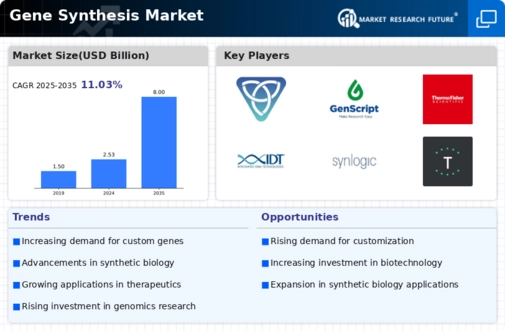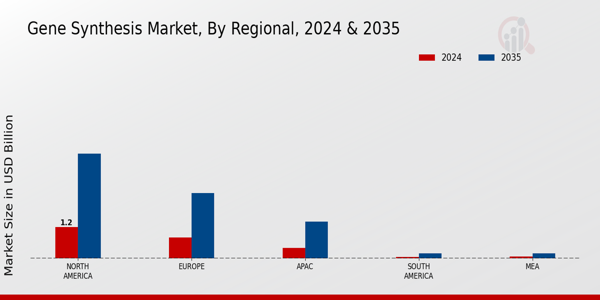Market Analysis
In-depth Analysis of Gene Synthesis Market Industry Landscape
The gene synthesis market is set to reach US$ 11.23 BN by 2032, at a 19.96% CAGR between years 2023-2032. The forces that govern the dynamic forces of gene synthesis market are a combination of scientific innovation, medical need, industry process and dual economy related to its customized genetic content. The synthetic genomes present the breathtaking landscape with their growing requirement in different industries. With the artificial approach to DNA sequences that is applied in various industries, such as biotechnology, pharmaceuticals, academic researches, and agriculture gene synthesis may be named. More focus should be on the growing diversity of synthetic biology and genetic engineering, which is the main factor in this market’s movement. Gene synthesis serves as a tool that is systematically utilized by the researchers and the industries to organize DNA sequences for various applications such as production of therapeutic proteins, developing genetically modified organisms etc. Technological developments such as the advancement of gene synthesis have a central position in determining the dynamics of the market. With constant evolutions in the field of DNA synthesis technologies, accuracy adjustments, scaling up or down as required and cost fructifications that have led to availability and acceptance thereof has become a reality. The progress in the development of modern high-throughput synthesis techniques enables to produce custom DNA constructs at a significantly faster rate than before and is sufficient now due to the growing use of synthetic genes today. The dynamics in the gene synthesis market is strongly influenced by its relationship with healthcare. Gene therapy, molecular diagnostics that can be tailored to specific patients; and personalized medicine are premised obviously on the success of accurate de novo DNA synthesis. The development of personalized gene constructs for use in vector pharmaceuticals is made possible by synthetic genes, but they also contribute to the field of precision medicine’s progress. One of the most important forces to consider in the gene synthesis market is regulation. The handle on genomic material carries ethical interference and danger issues that will lead to the development of regulatory structure that could govern constructed genetic synthesis activities. As an important example of the aspects on which companies that provide gene synthesis services should focus, these regulations must be strictly followed obliging them to adjust for their operating procedures, quality control measures and even the whole market environment. Fiscal factors that significantly influence the gene synthesis market include research funding, trading investment and markets’ demand. Public and private funding grants the projects of synthetic biology based on gene synthesis is carried out, which allows making progress in such practical directions as focus on customized genetic materials to make atypical connections between cells. Investment in gene synthesis companies acts to stimulate technological innovation and, therefore increase the competitiveness of the industry. The process of globalization, inter-institutional collaboration that is deftly articulated among research institutions biotechnology companies and academic organizations in addition to non-governmental formations reconcile into the dimensioning of gene synthesis market. Duality of International cooperation and intricacy the development advancement through cross-border partnerships enables easier transfer of knowledge, resources, and proven models to accelerate synthetic biology innovations.













Leave a Comment